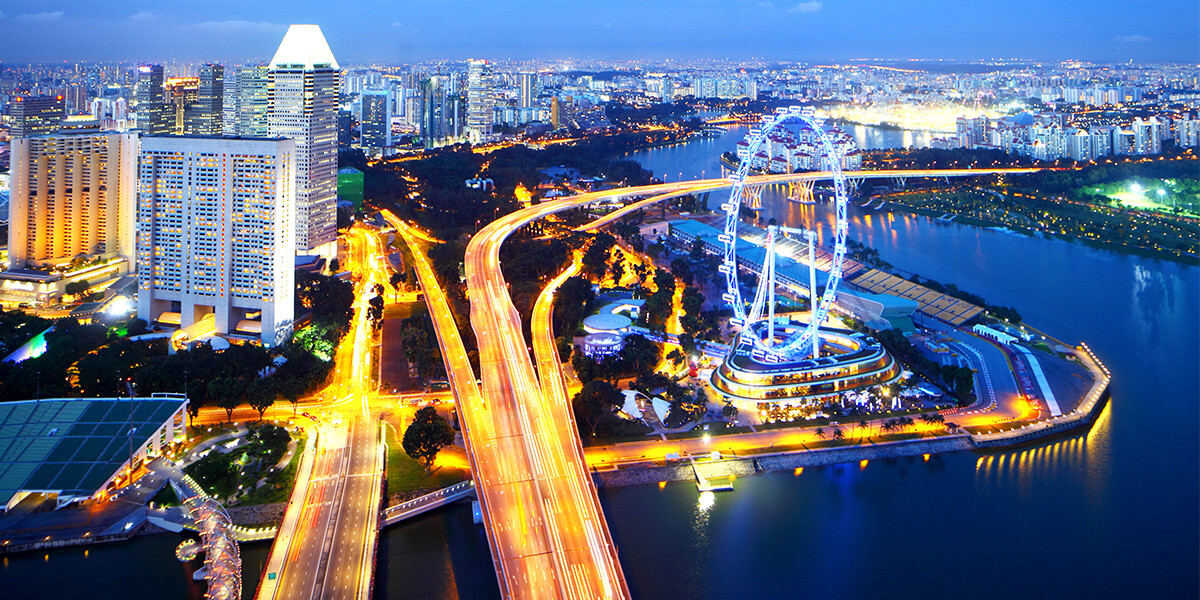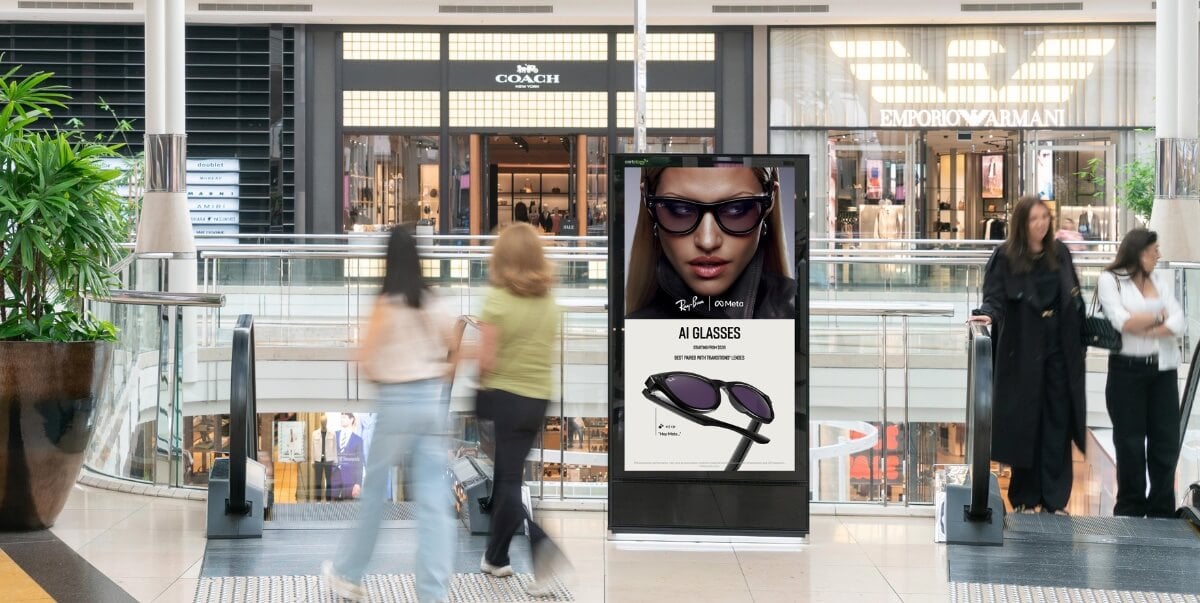
This blog is an excerpt from the special edition report, Programmatic Out-of-Home: What APAC Marketers Need to Know.
In the dynamic landscape of advertising, programmatic technology combined with digital signage is revolutionizing the industry. This blog delves into how programmatic digital out-of-home (DOOH) is enhancing advertiser capabilities, optimizing ad spend, and integrating into omnichannel strategies. From true addressability and rising efficiency levels to razor-sharp targeting, discover the transformative impact of programmatic DOOH and how it’s driving better results for brands across the APAC region and beyond.
True addressability
Advertisers have always searched for clear ways to optimize their ad spend. In this regard, they can rest assured that their OOH spend packs a punch. For instance, recent research from the Outdoor Media Association reveals that people in Australia are more than twice as alert outside the home compared to their screen time indoors, and are twice as likely to act on brand messages.
The emergence of programmatic DOOH has significantly optimized this scenario. Programmatic takes the flexibility and efficiencies of DOOH a step further to make OOH truly addressable by incorporating point-of-interest strategies and the flexibility to launch, pause or shift activity on a moment’s notice. Programmatic takes it down to the impression level by using mobile devices as cookies in the real world; it also enables us to examine exposed audiences and measure brand uplift, footfall and web conversion.
There are clear signs that programmatic technology is helping marketers to not only drive awareness and interest for their brand but also to be more efficient and effective with their media spend.
John Ng, the Singapore-based former managing director of Gov at Publicis, says: “The idea that we have data to determine who we are targeting, where we shall engage and what the right message is are the key drivers of programmatic DOOH. In other words, we are better able to account for where we spend our budgets and incur less wastage by being held to a specific location at 100% share of voice, 24/7, when our audiences are on the move and are multi-screening.”
Rising efficiency levels
Programmatic DOOH allows advertisers to be more efficient by enabling them to make data-driven decisions concerning their DOOH spending. More specifically, they are able to set bidding parameters for OOH inventory against certain conditions, whether it’s based on audience demographics, location or environmental conditions. For example, an ice cream company can increase its budget to reach consumers at specific retail locations on warmer days versus the remainder of their buys.
Sally Lawrence, the group director, media, at Australia-based agency Enigma, says that this ability to tap into key moments in the user journey makes every dollar invested work harder: “In most cases we’re using programmatic DOOH alongside direct buys, seeing them as complementary to each other. We’re using our direct buys to do more of our reach job and then using programmatic for our more tactical-based buying, incorporating things like day parts and weather triggers to align with those key moments that are going to influence purchasing decisions.“
Marc Langenfeld, head of media at VaynerMedia APAC, says that this approach is enabled by stronger evaluation opportunities for advertisers: “Many programmatic DOOH partners such as Vistar Media offer measurement opportunities, including brand and sales lift studies, to assist advertisers in substantiating their campaigns’ effectiveness. Furthermore, advertisers have the option to complement these studies by leveraging geo-targeted mobile display ads. This approach not only helps validate the intended target audiences are reached but also provides insights into actual foot traffic.”
“Programmatic DOOH enables advertisers to be even more responsive and appreciative to the environment around a billboard,” says Langenfeld. “This fosters greater creativity in crafting advertisements that are relevant to, and resonate with consumers, ultimately leading to a more significant, substantial and lasting impact. As the ecosystem matures and omnichannel relationships evolve, programmatic DOOH has gained improved measurability on metrics that hold greater importance for advertisers compared to mere potential reach.”
In the APAC region, we are working constantly on evolving services to deliver higher measurability standards for DOOH. Franck Vidal, Vistar Media’s director of SouthEast Asia sales & partnerships, says that this falls into several areas including providing greater flexibility and better planning tools. He adds: “Speed to market is improving in the sense that faster deployment times mean that advertisers can activate their campaigns within a matter of hours. Robust reporting is also making a tangible difference - allowing brands to consolidate campaign outcomes across different publishers and venue types.”
Razor-sharp targeting
Programmatic DOOH is offering advertisers new opportunities to play a more integrated role in the marketing mix. Addressability and a more holistic approach are the key features. “We’re able to provide audience targeting in line with that seen on digital platforms, making DOOH a mid-funnel solution complementing a top-of-funnel approach,” says Vidal. “And the holistic vision – think in terms of audience, environment, moments and ensuring that advertisers have the right assets in front of a moving audience.”
For instance, we were involved in a campaign for Tasmania Tourism. Leveraging our data-driven targeting capabilities, the tourism body was able to effectively activate audiences with precision, defining two specific groups of consumers: “Raw Urbanites” and “Erudites.” Our proprietary technology was deployed to analyze these audiences’ movement patterns and identify the most suitable high-impact DOOH screens for the campaign creative to run across.
Tourism Tasmania adjusted the creative and targeting tactics throughout the campaign. These adaptations were handled seamlessly throughout the campaign flight, allowing for live updates to be made within the same day.
Emma Terry, chief marketing officer at Tourism Tasmania, says: “Not only was [DOOH] a key lever for other media channels for us but in its own right, it delivered a 10% increase in intent for people wanting to travel to Tasmania from those exposed to the programmatic DOOH media – which is a fantastic result.”
To achieve more efficient audience targeting, Vistar Media’s Vidal says that it is working with partners including Foursquare, Adsquare, Eyeota and Hyp to blend this with time, location and proximity targeting to optimize client budgets as their campaigns progress.
There are cross-market benefits too. Buyers can use a specific audience segment to buy across the entire APAC region or even the globe, whether that be first- or third-party. They can also incorporate the same targeting tactics or embrace the flexibility afforded by DOOH across the region. There is now the ability for buyers and brands to truly take a global lens to their DOOH activations. For example, a buyer in Australia can easily purchase inventory across the US, UK, and Singapore.
VaynerMedia’s Langenfeld says that the type of targeting now offered through programmatic DOOH is undoubtedly attractive to brands: “It [DOOH] offers a more efficient buying process, making it appealing to advertisers of all sizes, both small and large. The ability to be far more targeted with DOOH advertisements also makes it more attractive to smaller brands and advertisers who can now engage in highly tailored campaigns.”
Langenfeld also feels that the addition of businesses’ first-party data will fuel growth and efficiency in DOOH. “For larger advertisers, programmatic DOOH presents the increased opportunity to leverage first-party data and deliver highly relevant, more targeted content to their customers,” he says.
The rising potential to integrate this first-party data into campaigns makes programmatic an even more attractive option for advertisers – just one of the reasons behind confidence that brands should invest more of their budgets in the medium. Publicis’ Ng says: “Since the re-opening post-Covid, we have seen budgets flowing back into OOH so there is no reason why marketers are not re-channeling their budgets from TV or print.” If Ng is correct in his view, this renewed focus on OOH will be good news for advertisers in delivering better results based on higher measurability and efficiency standards.




